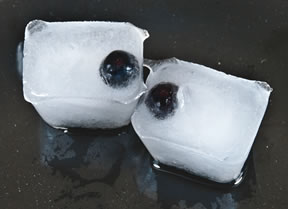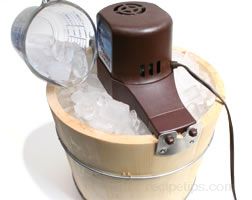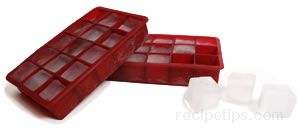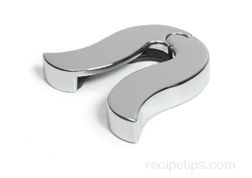White wine produced from grapes that are kept on the vine until the first deep frost. Grapes are then typically pressed while still frozen. Discovered unexpectedly in Germany in the 1700's when a crop of grapes were partially frozen due to an early frost, ice wine is now produced in colder climates throughout Europe and North America. To produce this wine, the grapes are covered with netting and not harvested until temperatures are 10 to 20 degrees Fahrenheit or -7 to -12 degrees Celsius. As the grape is processed, the water is removed in the form of ice and the highly concentrated juices that remain are then fermented into wine. Artifical freezing is not allowed. Due to small yields and the risks involved with harvesting the crop at exactly the right time, icewine is expensive and therefore, sold in half bottles.
Also known as: Eiswein (German), and Ehren Felser Icewine (a cross between Riesling and Sylvaner varietals).
The German wine law is categorized by two qualities of wine, Qualitätswein (high quality wine) and Tafelwein (table wine). German Eiswein is considered a Qualitätswein and is governed by those rules.
The Niagara region of Ontario, Canada is a highly respected producer. Canadian Icewine is governed by Vintners Quality Alliance.
Riesling is the most popular grape varietal used in the production of Icewine, though it is also produced with Verdelet (red varietal), Vidal, Pinot Noir, Sylvaner, Pinot Blanc, Gewürztraminer, and Chenin Blanc varietals.
Characteristics: Intensely sweet, rich, flavorful wine, high in sugar and acidity that is balanced by the sweetness. The wine provides flavors of apricot, peach, mango and melons with a somewhat nutty aroma.
Ageing: Though capable of long ageing, it can be drunk young.
Serving temperature: Serve at a temperature of 41º-46º F.
Serve in a small cordial glass, pour approximately 2 ounces.
Food pairings: Ideal on its own, at it's best when served with dessert. Avoid those desserts that are extremely sweet and sweet-chocolate based.


















